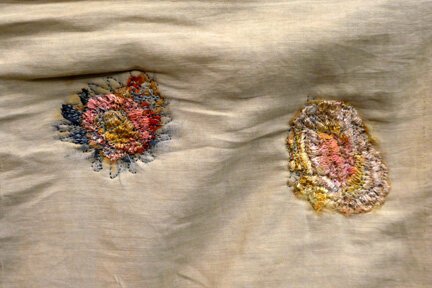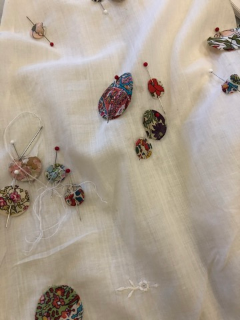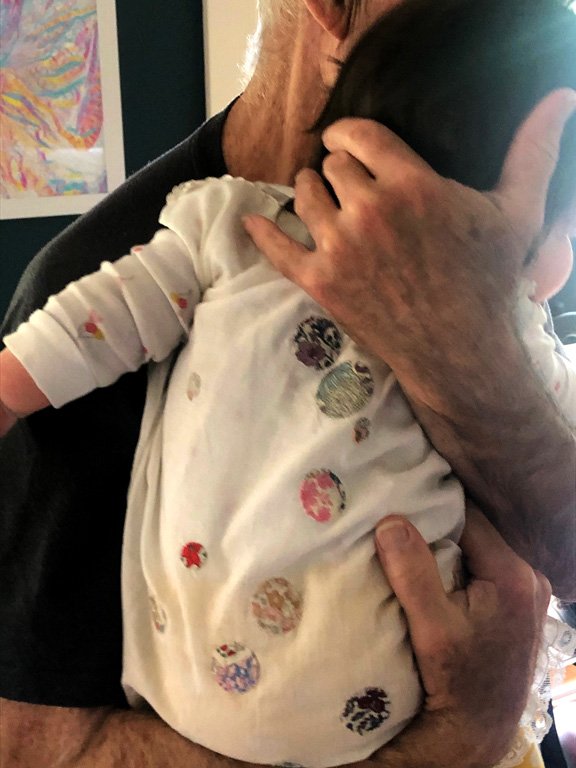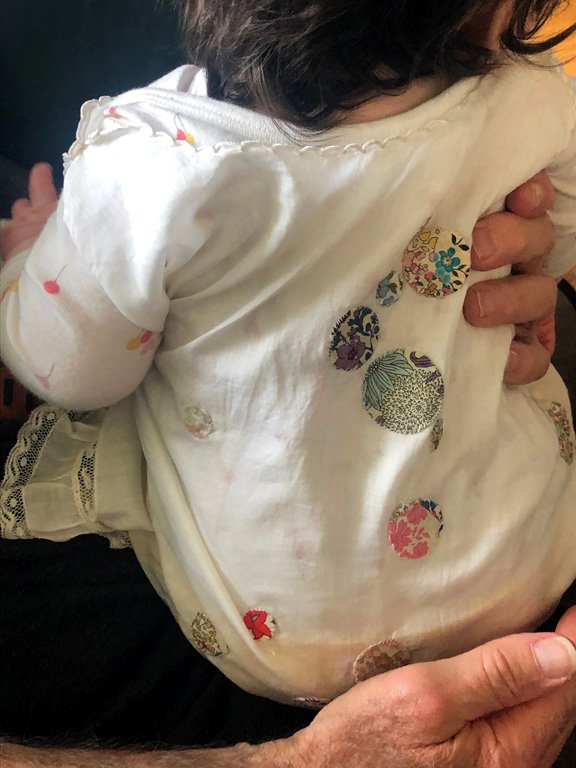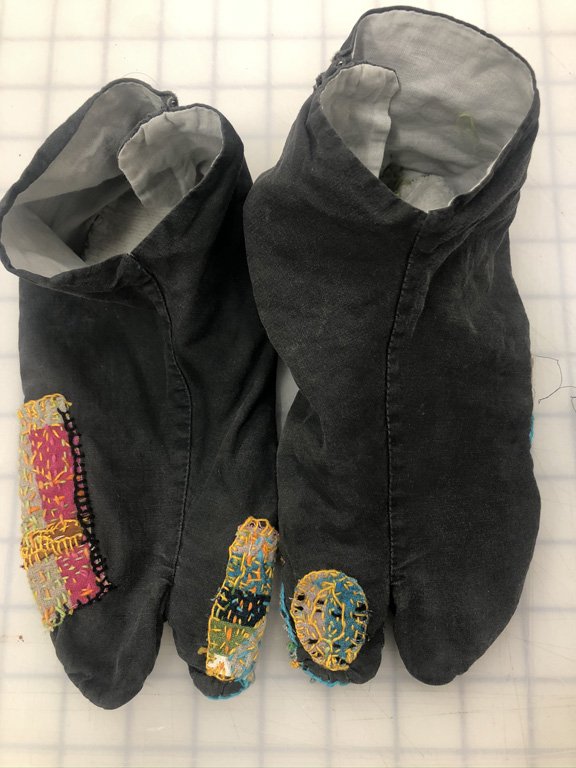THE MENDING TABLE
The Tale of Two Great Grandmothers and the Quilt
Sometimes I receive an heirloom to mend that has such a huge story of family lore and is also extremely meaningful as a textile, that it is daunting to begin the repair. There is so much mystery surrounding which side of the family this quilt is from as it ended up in a trunk with heirlooms from both sides. I’ve had this old deco deep blue satin quilt, made by one of Christie Mellor’s great grandmother’s in my possession for a few years, but was concerned how to restore it and also keep the original fabrics and unique design primary. I finally plunged in, removing the torn back side to reveal wonderful old ticking fabrics. A canvas of sorts, broken into a grid. The round circle areas on the front, rimmed in gold reminded me of old picture frames, so I started machine embroidering faces in the areas that were most worn. The outside edges of the quilt got new bindings as the edges were very worn and frayed. (see the last three photos of the quilt for “before” and the rest are “after” the repair. The photos of the two great grandmothers, end the photo story.
APPLIPOPS
This lovely little antique dress was inherited from my grandmother. It had stains and signs of wear which I decided to cover with tiny little circles of Liberty print fabric. The perfect little applique circles are made with made using the clever little apparatus called “Applipops”.
TABI SOCKS
CHESSIE
This little outfit was lovingly made 30 years ago by Jan Zeitlin from vintage “Chessie” fabric, named for the mascot of the Chesapeake Railroad. I love how fabric literally tells us forgotten stories and history. I mended the top and it is now worn by my granddaughter.
Elaborately Mended
Jan Zeitlin’s elaborately embroidered mends and embellishments on a grouping of cashmere sweaters. These sweaters are lovingly restored and elevated. They come from her own wardrobe and garments passed to her from relatives.
Dosa Pants
I purchased these handwoven cotton Dosa Khadi pants around 10 years ago. They began to wear thin and holes formed, unable to let them go without a fight I began looking through my scraps of finely woven cotton and old handkerchiefs and began making patches. I liked that the whites were all slightly different and the patches started to make their own lyrical story. The whole backside was ripped so I applied a handkerchief over the whole seat to reinforce it and stitched as invisibly as possible to create a layered collage of white patches. I intend to keep patching them and eventually the original pants will be covered completely.
Eco Printing
Eco dyeing is a great way to revive old materials. I love that it is so connected to the seasons and involves foraging and finding what is local and available to us. It reminds us of the bounty we often discard like the skins of fruits, pits of avocados and old leaves. Some of the projects pictured here use avocado pits to revive a child’s stained eyelet dress, rendering it a deep dusty rose. Old family monogrammed napkins are given a new life when wrapped and steamed with Scabiosa and onion skins. Some dyes have tannin and do not need mordants such as Eucalyptus but others need to have an alum mordant to render the dye be more permanent. The beauty of this kind of dyeing is that you can keep adding layers and over dyeing the same materials for interesting effects.
A Vest as Travel Journal
There are stories in all our clothes as well as resources and someone’s handwork. That is why I often feel compelled to transform things that still have value to be able to be used, rejuvenated and reimagined. Twenty years ago our dear friend in Milan gifted my daughter a vest that was made (I believe) in Indonesia. It had intricate cut work and indigo dyed. I was going through old clothes, sorting and saving and deciding what to do with certain items. It was faded and needed reviving, but the basic fabric and cut was lovely. The vest was in decent shape.
I began by dyeing the whole thing in an onion skin bath which gave the paler indigo areas an olive-green tone but kept the darker indigo accents. I then appliqued eco printed silk over the front, and pieces of an old torn embroidered Spanish shawl on the back. I integrated the fabrics with quilting stitching and embroidery. I was traveling in Hawaii, working on it at the end of long days of walking and swimming, I had no plan, I just let it be my traveling stitch journal that I still keep adding to.
Jean Repair
There are so many resources in a pair of jeans that we must all begin saving and repairing them (as well as all textiles) as the landfills can no longer absorb all we are dumping into them. Jeans are a wonderful canvas for creative stitching, patching and reinventing. The examples shown here include jeans that have had the seams opened so they could be covered in Sashiko threads while others have been patched with machine embroidery. There are endless ways to mend and repair jeans and the ones that are really beyond repair can be used as patch materials for other repairs.











